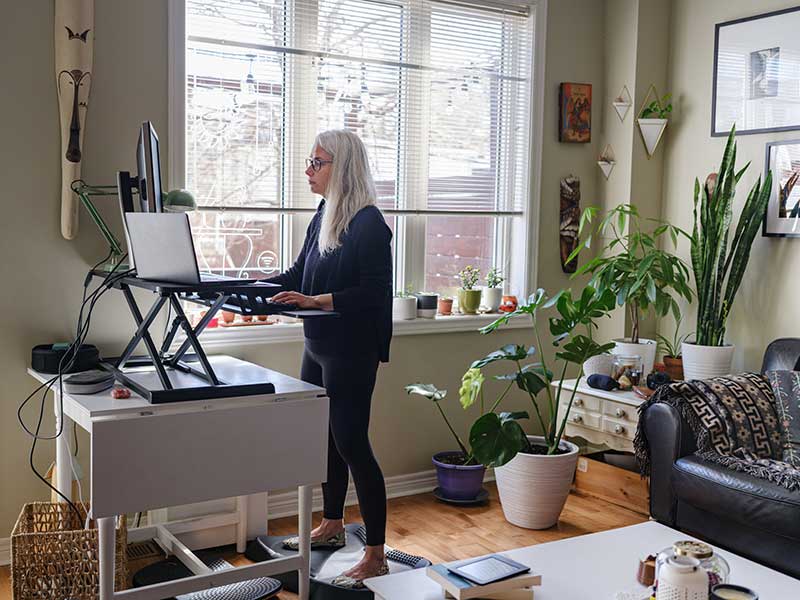
Changes to the tax form needed to claim home office expenses aim to simplify the form for employers as more employees continue to work from home.
“The T2200 has always been a difficult thing for employers to complete,” Lawrence Levin, a tax partner with EY Canada in Toronto, said in an interview. “It asked for a lot of information, and some of the questions were ambiguous.”
The updated form, posted on Tuesday, no longer requires employers to certify the percentage of time an employee worked from a home office. Instead, the form simply asks the employer to certify if an employee worked from home more than 50% of the time over a period of at least four consecutive weeks.
Previously, the employer typically had to ask the employee what percentage of time they worked from home, defeating the purpose of the employer certifying that information, Levin said. Plus, the period for assessing whether the employee worked 50% or more of the time at home had been unclear.
The other change is clarity regarding reimbursements. The form now references supplies and expenses related to a home office, such as a cell phone plan, lessening confusion about items not eligible, including travel.
As in 2023, an employee is eligible to claim home office expenses if the employer required them to work from home (written or verbal agreement), or the employee voluntarily entered into a formal telework arrangement with their employer.
While “formal telework arrangement” isn’t a defined term, what’s key is that the employee worked from home with the employer’s consent, Levin said on Friday during an EY webinar on form T2200.
He also noted that a short-term agreement, such as when an employee has a medical issue and works from home for, say, three months could be considered a formal telework agreement.
Before 2020, generally, two types of employees needed their employers to provide them with T2200s: those in commissioned sales roles and those with permanent arrangements with their employers to work from home offices.
While employers aren’t required by statute to provide T2200s, Levin suggested they prepare the forms in bulk for all employees who qualify instead of preparing them piecemeal when employees ask — likely near the tax-filing deadline. He also suggested employers issue T2200s at the same time as T4s, at the end of February.
Levin also noted in the webinar that the Canada Revenue Agency (CRA) expects employers to issue T2200s if employees qualify to claim home office expenses, although the risk is “primarily an employee relations issue,” rather than one of being offside the Income Tax Act.
This is the second consecutive tax-filing season that claiming home office expenses follows pre-pandemic protocol, with no flat-rate method — temporarily implemented by the CRA for tax years 2020–2022.
“While there was relief provided during the pandemic years, that flat-rate method was a deviation from the actual law,” Levin said.
Previously, the CRA said taxpayers claimed $5.2 billion in home office expenses in 2022. About half that amount was claimed using the temporary method available during the Covid-19 years.
“During the pandemic, what we saw is measures being implemented that would ease the burden on small businesses for certain processes,” said Michelle Auger, senior policy analyst for the Canadian Federation of Independent Business in Toronto, in an interview. Reducing administrative processes for small business owners is a priority, she said, and a return to the status quo “seems like a step back.”